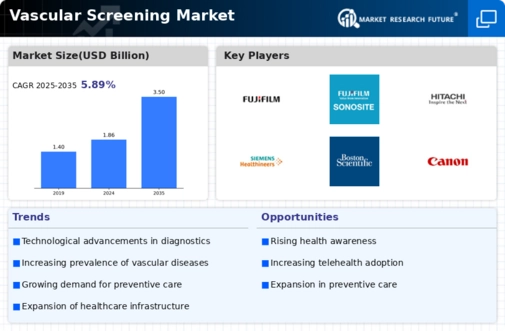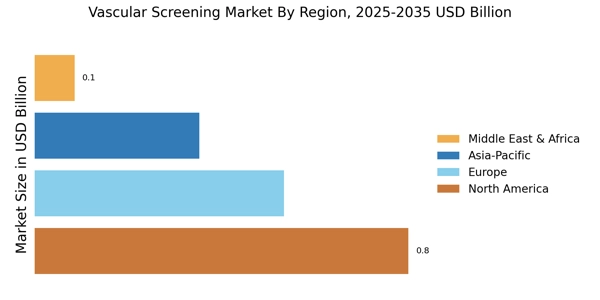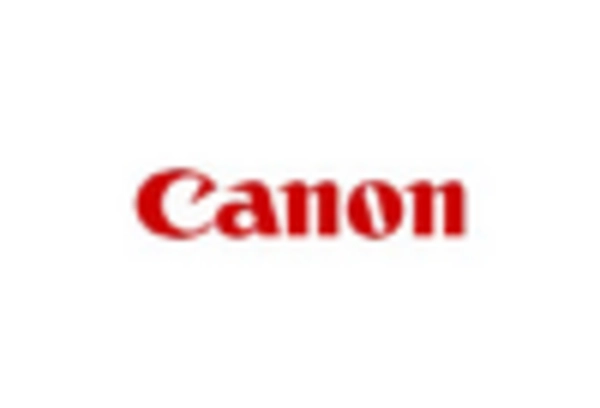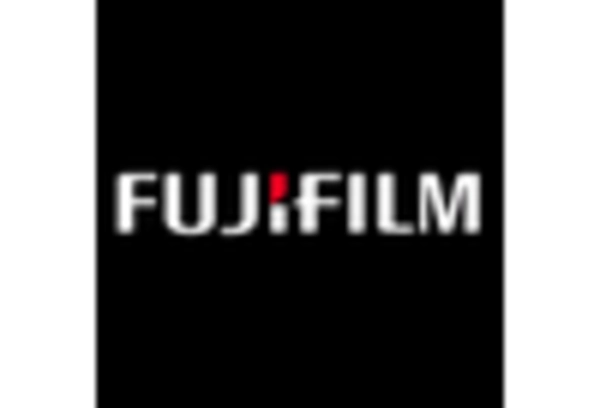Government Initiatives and Funding
Government initiatives aimed at improving public health are instrumental in propelling the Vascular Screening Market. Many countries are implementing national screening programs to identify individuals at risk for vascular diseases, thereby promoting early intervention. These initiatives often come with substantial funding, which supports the development and distribution of screening technologies. For example, public health campaigns that encourage regular vascular screenings can lead to increased awareness and participation among the population. This, in turn, drives demand for screening services and products. Furthermore, collaborations between government agencies and private sector stakeholders can enhance the reach and effectiveness of these programs, ultimately contributing to the growth of the Vascular Screening Market. As governments continue to prioritize vascular health, the market is expected to benefit from sustained investment and support.
Rising Incidence of Vascular Diseases
The increasing prevalence of vascular diseases, such as peripheral artery disease and aneurysms, is a primary driver of the Vascular Screening Market. According to recent data, vascular diseases affect millions worldwide, leading to a heightened demand for early detection and intervention. This trend is particularly evident in aging populations, where the risk of vascular conditions escalates. As healthcare systems prioritize preventive measures, the need for effective vascular screening solutions becomes more pronounced. The Vascular Screening Market is thus positioned to expand, as healthcare providers seek to implement screening programs that can identify at-risk individuals before complications arise. This proactive approach not only improves patient outcomes but also reduces long-term healthcare costs, making it a critical focus for stakeholders in the industry.
Integration of Advanced Data Analytics
The integration of advanced data analytics into healthcare practices is emerging as a key driver for the Vascular Screening Market. By leveraging big data and predictive analytics, healthcare providers can identify trends and risk factors associated with vascular diseases more effectively. This analytical approach enables the development of targeted screening programs tailored to specific populations, enhancing the overall efficiency of healthcare delivery. Moreover, data analytics can facilitate the monitoring of screening outcomes, allowing for continuous improvement in practices and technologies. As healthcare systems increasingly adopt data-driven strategies, the Vascular Screening Market is likely to experience growth, as stakeholders recognize the value of informed decision-making in enhancing patient care. The potential for improved health outcomes through data analytics underscores its importance in shaping the future of vascular screening.
Growing Awareness of Preventive Healthcare
The rising awareness of preventive healthcare is significantly influencing the Vascular Screening Market. As individuals become more informed about the benefits of early detection and lifestyle modifications, there is a growing inclination towards regular health screenings. Educational campaigns and community outreach programs are pivotal in disseminating information about vascular health, encouraging people to seek screenings proactively. This shift in mindset is particularly evident among younger populations, who are increasingly prioritizing preventive measures to mitigate future health risks. Consequently, healthcare providers are adapting their services to meet this demand, leading to an expansion of the Vascular Screening Market. The emphasis on preventive care not only enhances patient engagement but also aligns with broader healthcare trends focused on reducing the burden of chronic diseases.
Technological Innovations in Screening Methods
Technological advancements play a pivotal role in shaping the Vascular Screening Market. Innovations such as high-resolution imaging techniques, portable ultrasound devices, and artificial intelligence algorithms enhance the accuracy and efficiency of vascular screenings. These technologies facilitate non-invasive procedures, allowing for quicker diagnoses and improved patient experiences. For instance, the integration of AI in analyzing imaging data can significantly reduce the time required for interpretation, thereby increasing the throughput of screening programs. As these technologies become more accessible and affordable, healthcare providers are likely to adopt them, further driving the growth of the Vascular Screening Market. The continuous evolution of technology not only enhances diagnostic capabilities but also fosters a competitive landscape among manufacturers, prompting further investment in research and development.


















Leave a Comment